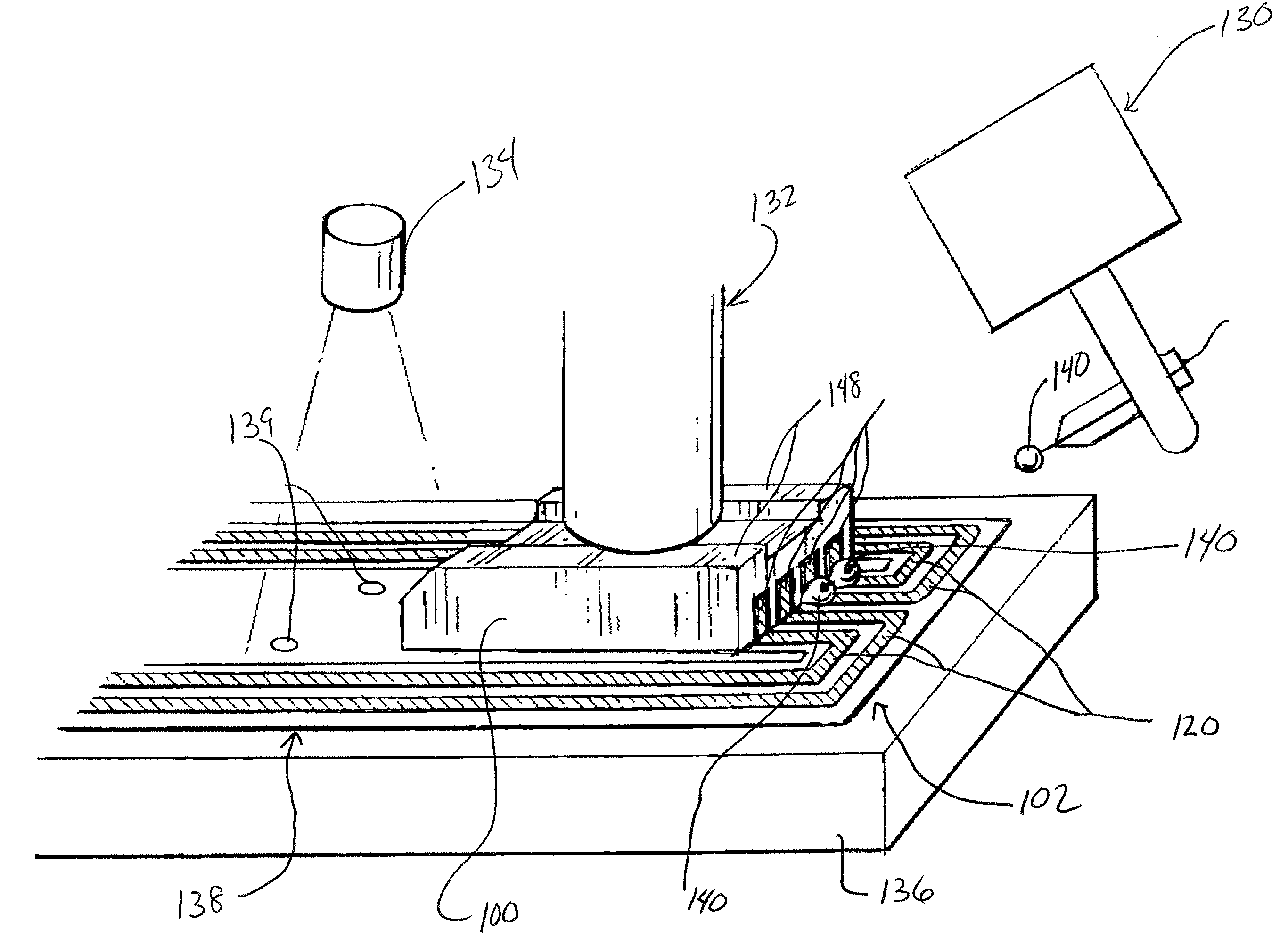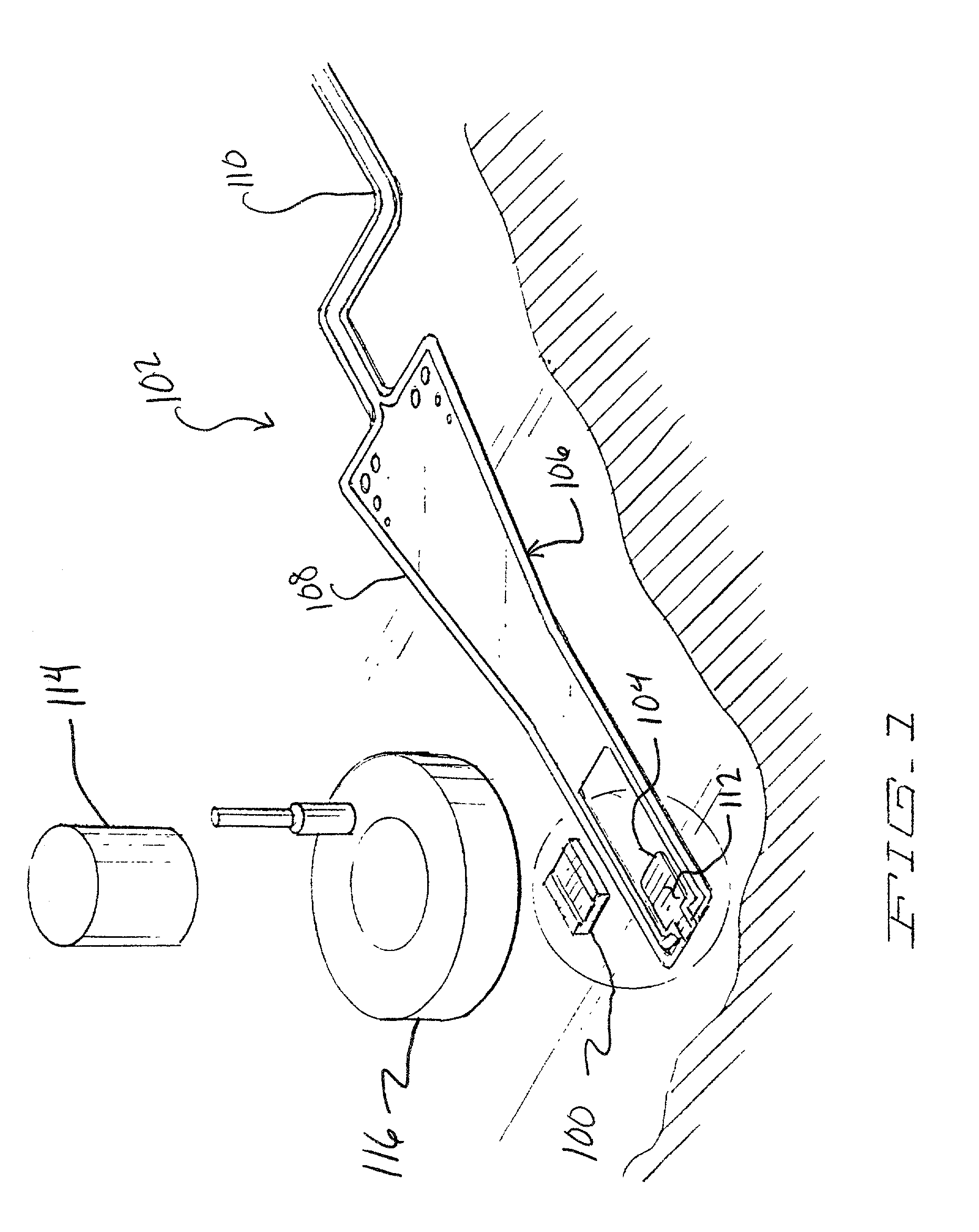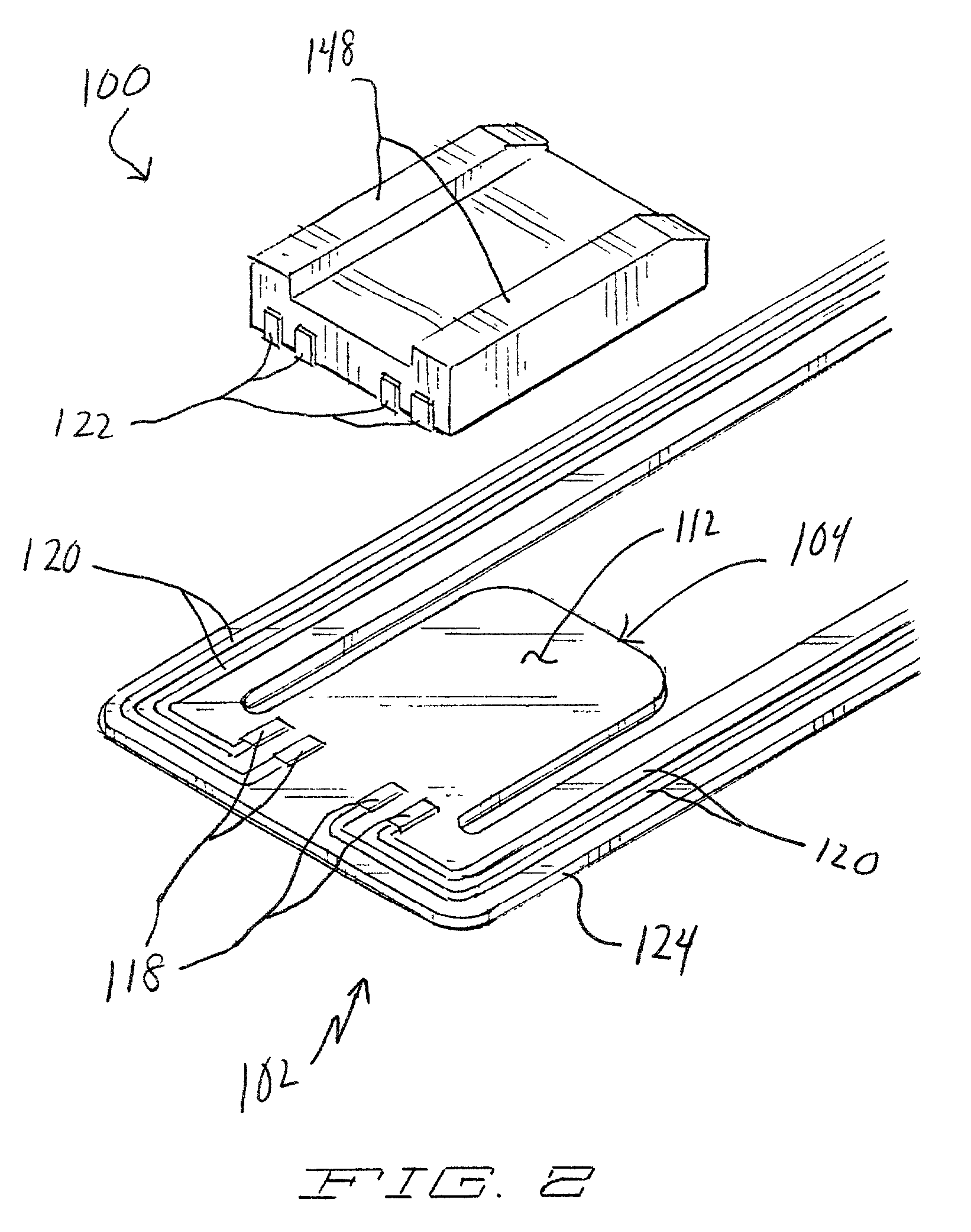Head gimbal assembly method
a head gimbal and assembly method technology, applied in the direction of mechanical roughness/irregularity measurement, association of printed circuit non-printed electric components, instruments, etc., can solve the problems of complete hard drive failure, high cost, damage to the head or the media, etc., to simplify tooling, simplify tooling, and improve alignment
- Summary
- Abstract
- Description
- Claims
- Application Information
AI Technical Summary
Benefits of technology
Problems solved by technology
Method used
Image
Examples
Embodiment Construction
[0050]A solution to each of the above mentioned problems is a novel process flow combined with processing methods to accurately attach a read / write head / slider, make the electrical connection, perform a dynamic electrical test on the head prior to suspension attachment, measure static angles without loading the suspension and manage the final torque acting on the slider body to assure proper flying characteristics. This method will first be described generally and then more specifically to follow.
[0051]A tray or batch of head sliders are mounted to circuited gimbals in an automated pick and place machine, utilizing vision, stages, adhesive dispense and ultra-violet (UV) tacking. Such machines are known in the art and will be described generally herein. The circuited gimbals are of the type that includes integral traces, but are not completed suspension assemblies. The sliders are provided as individual pieces in their own respective package.
[0052]Once the sliders and circuited gimba...
PUM
| Property | Measurement | Unit |
|---|---|---|
| static angle | aaaaa | aaaaa |
| dynamic electrical test | aaaaa | aaaaa |
| stiffness | aaaaa | aaaaa |
Abstract
Description
Claims
Application Information
 Login to View More
Login to View More - R&D
- Intellectual Property
- Life Sciences
- Materials
- Tech Scout
- Unparalleled Data Quality
- Higher Quality Content
- 60% Fewer Hallucinations
Browse by: Latest US Patents, China's latest patents, Technical Efficacy Thesaurus, Application Domain, Technology Topic, Popular Technical Reports.
© 2025 PatSnap. All rights reserved.Legal|Privacy policy|Modern Slavery Act Transparency Statement|Sitemap|About US| Contact US: help@patsnap.com



